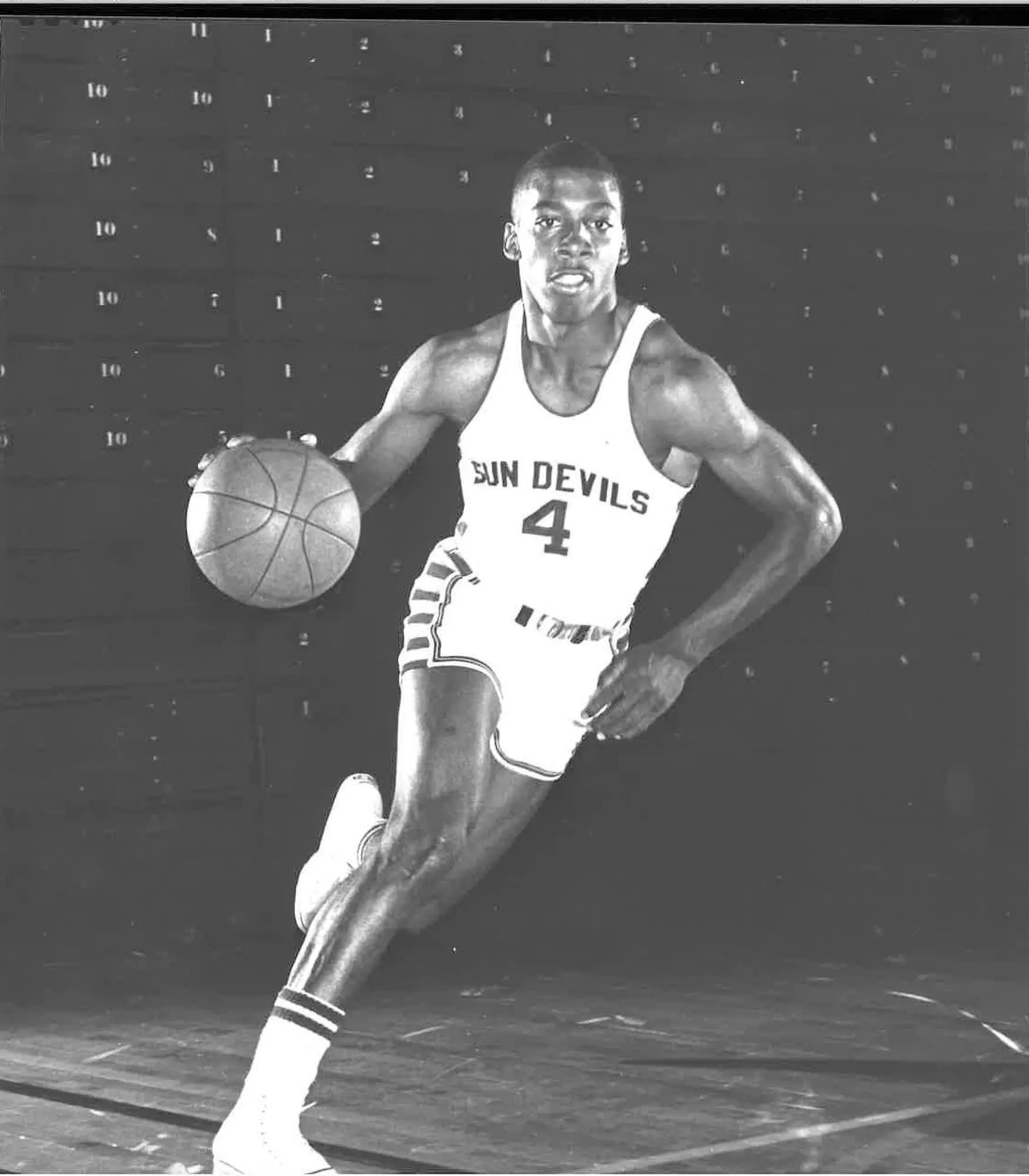By Dylan Pescatore and Kaneyl Carpenter, Cronkite PR Lab
Freddie Lewis grew up in a small town outside Pittsburgh called Mckeesport, Pennsylvania. He played basketball for his high school team, but afterwards had no offers to move his talents to a Division I program. However, 128 Junior Colleges wanted Lewis to play for them, including Eastern Arizona College in Thatcher, AZ. Lewis decided to go to Eastern Arizona for two years, where he excelled, averaging 36 points per game for the Fighting Gila Monsters.
As expected, Division I schools started taking notice and calling the 6-foot-tall point guard, but Arizona State, despite being 150 miles from Thatcher, was not one of them. At the end of Lewis’ second year at Eastern Arizona, the Fighting Gila Monsters had two games against the Sun Devils’ freshman squad. Lewis scored 74 points combined in those games, which finally got ASU head coach Ned Wulk’s attention. Lewis became a Sun Devil the next season.
During his remaining two seasons in Tempe, Lewis averaged 18.2 PPG, making the All-WAC conference team both years. Although the Sun Devils weren’t very successful in those two years, Wulk helped Lewis reach the next step in his illustrious career.
“He (Wulk) asked the coach from Cincinnati to take a look at me in the draft,” Lewis said.
The NBA’s Cincinnati Royals took Lewis in the 1966 draft, a team with a few Hall of Famers already on it, Jerry Lucas and Oscar Robertson. Lewis, the rookie, immediately turned to the famed Robertson for help.
“I had a great mentor in Oscar Robertson. Oscar was very nice and an excellent basketball player,” Lewis said. “He taught me how to play the professional game, rather than the college game.”
After the 1966-67 season with the Royals, Lewis signed with the Indiana Pacers of the American Basketball Association.
Lewis spent the next eight years in the ABA with the Pacers, winning championships in 1970, 1972 and 1973, the only championships the franchise has ever won.
On those teams were some more storied names, including George McGinnis, Mel Daniels and Roger Brown. Those three players are the only ones from Lewis’ era to get their numbers retired, along with head coach Slick Leonard.
As time has gone on, Lewis’ teammates have been vocal in their support for getting his number moved to the rafters as well. However, at this point, Pacers’ ownership has not agreed with their wishes. Lewis himself expressed his feelings on the matter.
“I feel really, really sad that it has taken them so long to even recognize that my number should be retired,” Lewis said.
The Pacers ownership decided they wanted to retire only three numbers from that era of their franchise. McGinnis, Daniels and Brown were the ones chosen, with Lewis’ number 14 on the outside looking in. Those three, along with Lewis’ other teammates believe that he should have been in that group, with his number flying above the court in Indianapolis.
“He’s done a lot of great things and he was the absolute leader of the team,” George McGinnis said in the IndyStar.
Lewis’ playing career finished in 1977, however a new opportunity arose years later for him to continue to be part of the game that has meant so much to him. Lewis met Walter Ray, the founder of a non-profit organization called Education Goals Opportunities and Sports based in Washington D.C. The foundation is geared to helping inner-city youth thrive through academics and athletics.
The pair met through a common friend, Sam Jones. Jones, another NBA Hall of Famer, won 10 championships in 12 years with the Boston Celtics. Through him, Lewis started to work with the non-profit run by Ray, helping kids improve on a daily basis.

Lewis never told the kids he worked with about his basketball career. The internet wasn’t a thing so, the children didn’t have a way to learn more about him. One day someone mentioned it, and the players were in awe of Lewis and his accomplishments. The three championships with the Pacers were great, but to Lewis there is something special about working with the kids.
“I really compliment them on the work they put in. I have a strong belief that they have to put the work in to get the results,” he shared.
Fortunately, he is providing these kids with something Lewis never had growing up in Western Pennsylvania – a role model.
“I wanted to give them some of the things I didn’t have growing up, such as a mentor in basketball,” he said.
Ray’s organization helps kids to work on their basketball skills to hopefully play at the collegiate level. There have been numerous success stories from the organization, most notably Tony Skinn, the head coach at George Mason University, along with Troy Hailey who played four years at Binghamton University.
“I am most proud of those who didn’t get opportunities out of high school that ended up doing well in life,” Ray said.
Lewis was an accomplished basketball player and continues to be an even better servant in his community. Although his number doesn’t currently reside in the rafters of Gainbridge Fieldhouse, where the Pacers play, he knows deep down he deserves to be up there.